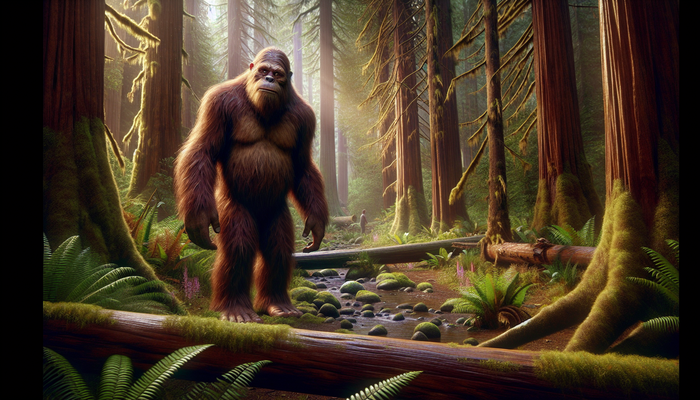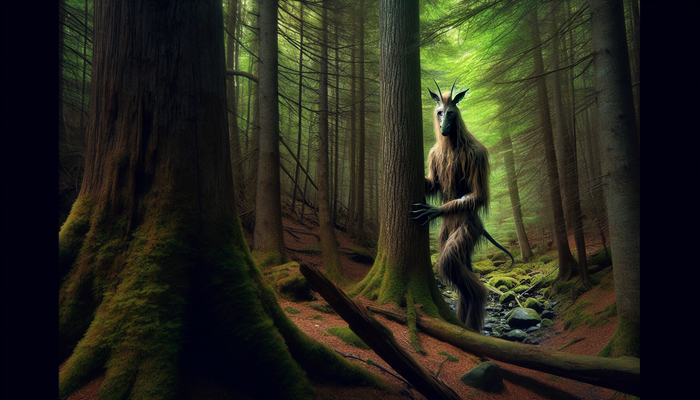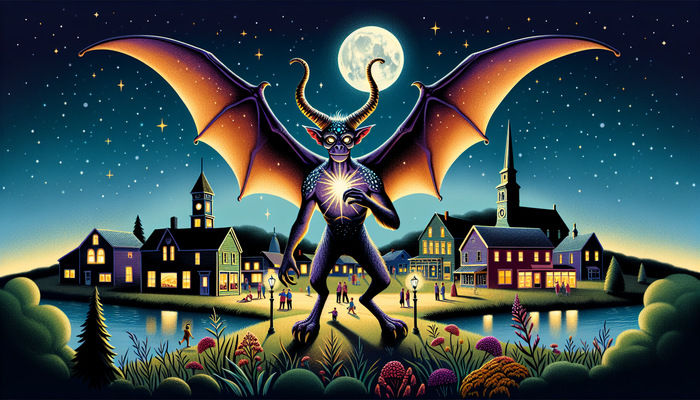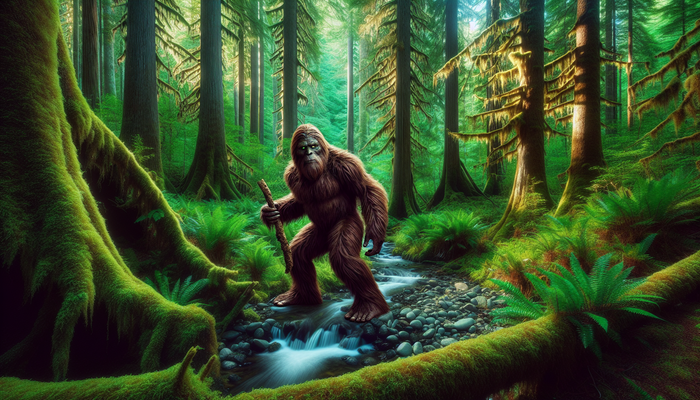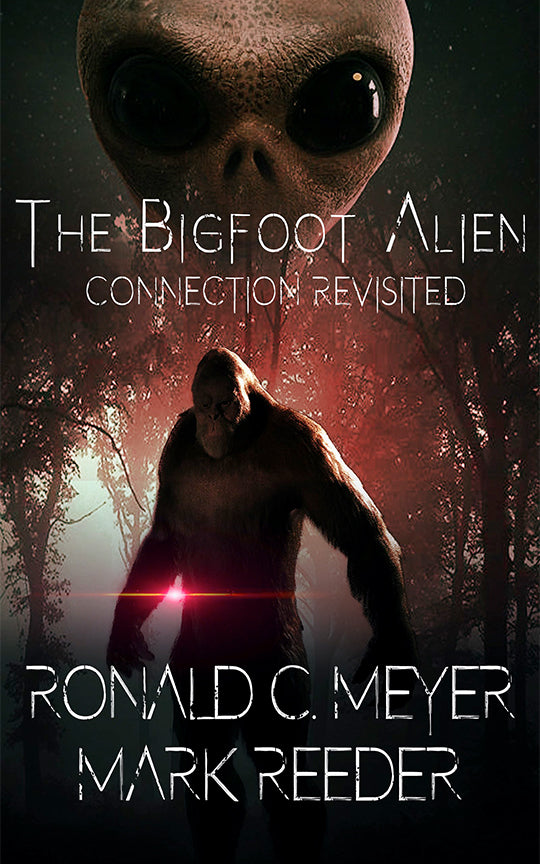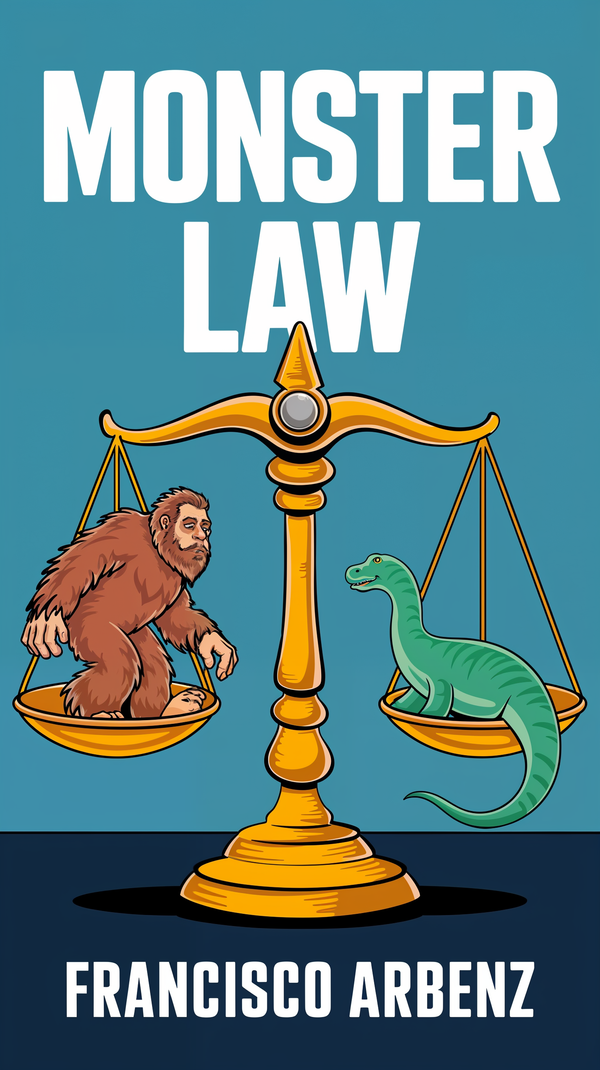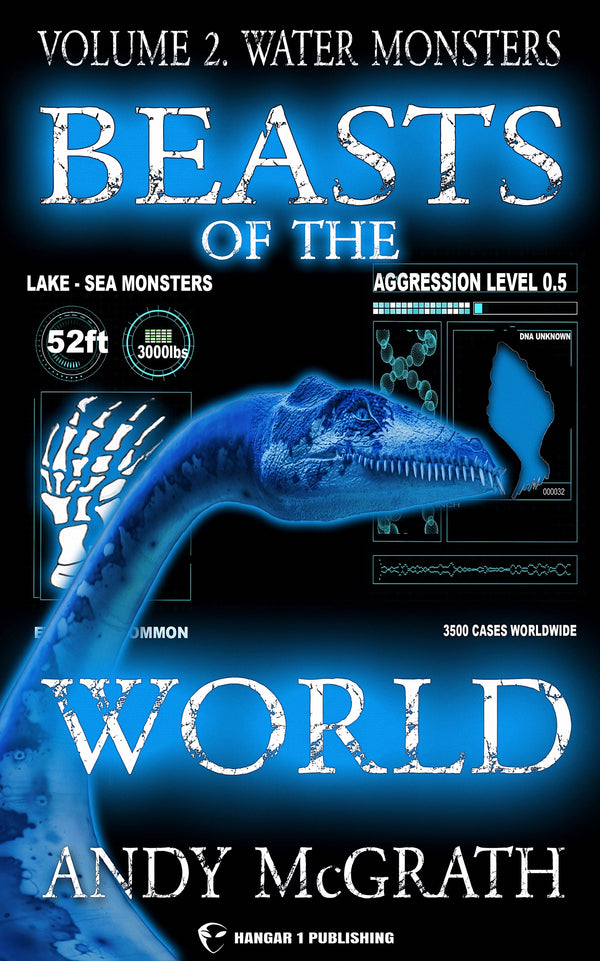Exploring Bigfoot in Various Cultures Worldwide
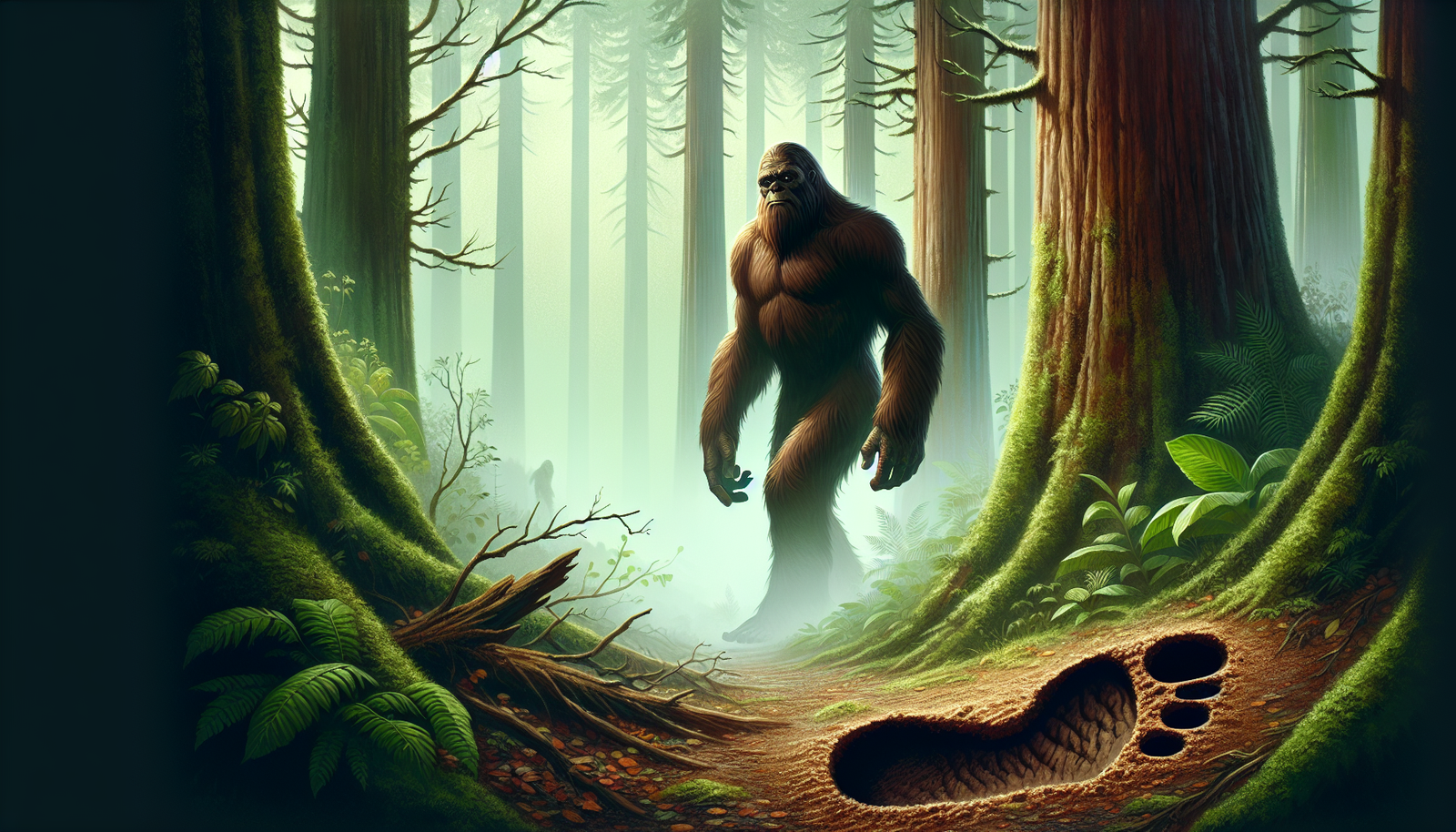
By Jack Sullivan, Cryptozoologist
The Origins of the Bigfoot Legend
The concept of a "wild man" isn't unique to modern times. European folklore is rich with tales of hairy, forest-dwelling humanoids. These stories laid the groundwork for what would eventually become the Bigfoot phenomenon in North America.
Indigenous peoples across the continent have long spoken of giant, hair-covered beings inhabiting the wilderness. The Salish people of the Pacific Northwest used the term "Sasquatch," derived from the Halkomelem word "sásq'ets," meaning "wild man" or "hairy man." This name would later be anglicized and popularized, becoming synonymous with the creature we now know as Bigfoot.
As European settlers pushed westward, they encountered these native legends. The collision of indigenous lore with frontier exploration created a fertile ground for the Bigfoot myth to take root and flourish in the American imagination.
Bigfoot in North American Culture
In North America, particularly the Pacific Northwest, Bigfoot has become a cultural icon. Described as a towering, muscular biped covered in dark hair, Bigfoot is said to stand anywhere from 6 to 10 feet tall. Reports often include details of massive footprints, eerie vocalizations, and fleeting glimpses through dense foliage.
The modern Bigfoot phenomenon exploded into public consciousness in 1958 when Jerry Crew, a bulldozer operator in Humboldt County, California, discovered a set of enormous, human-like footprints at his worksite. The local press coined the term "Bigfoot," and a legend was born.
Perhaps the most infamous piece of Bigfoot lore is the Patterson-Gimlin film, shot in 1967 near Bluff Creek, California. The short clip shows a large, hair-covered figure striding across a clearing, turning briefly to glance at the camera. This grainy footage has been the subject of intense scrutiny and debate for decades, with believers hailing it as proof of Bigfoot's existence and skeptics dismissing it as an elaborate hoax.
Beyond its cryptozoological appeal, Bigfoot has become a powerful symbol of wilderness preservation. The creature's alleged habitat – vast, untamed forests – aligns perfectly with conservation efforts. Many Bigfoot enthusiasts argue that protecting these areas is crucial not just for the potential discovery of an unknown primate, but for the preservation of ecosystems and biodiversity.
The Yeti: Himalayan Mystery
Halfway across the world, high in the Himalayan mountains, another legendary creature captures the imagination: the Yeti, often called the "Abominable Snowman." Described as a large, ape-like being covered in white or reddish-brown fur, the Yeti is deeply ingrained in Sherpa culture and Buddhist traditions.
Sherpa folklore portrays the Yeti as a guardian of the mountains, a being to be respected and sometimes feared. Unlike the generally shy and elusive Bigfoot, Yeti stories often include more aggressive encounters, with the creature said to attack livestock or lone travelers.
Western fascination with the Yeti reached fever pitch in the early 20th century. In 1921, a British expedition to Mount Everest reported finding large, mysterious footprints in the snow. This sparked a wave of Yeti-hunting expeditions, drawing renowned explorers and mountaineers to the region.
One of the most famous Yeti researchers was Sir Edmund Hillary, who along with Tenzing Norgay, was the first to summit Mount Everest. In 1960, Hillary led an expedition specifically to search for evidence of the Yeti. While the team found some unusual footprints and collected what locals claimed to be Yeti relics, no conclusive proof was uncovered.
The Yeti's influence extends far beyond the Himalayas. It has become a staple of popular culture, appearing in everything from serious documentaries to children's cartoons. This global recognition speaks to the universal appeal of the "wild man" archetype, resonating with people across cultural boundaries.
The Yowie: Australia's Wild Man
Down under, Aboriginal Australians have long told stories of the Yowie, a creature bearing striking similarities to Bigfoot and the Yeti. Described as a tall, hairy hominid with immense strength, the Yowie is said to inhabit the rugged bushlands and forests of Australia.
Aboriginal legends often portray the Yowie as a spiritual being, sometimes benevolent, sometimes fearsome. These stories are deeply intertwined with the Aboriginal concept of the Dreamtime, a complex belief system that explains the creation of the world and the spiritual significance of the land.
Modern Yowie sightings began to gain traction in the late 19th century, with European settlers reporting encounters with large, ape-like creatures in remote areas. These accounts often described the Yowie as having a terrible odor and making loud, intimidating vocalizations.
The Yowie has become a part of Australian popular culture, featured in books, television shows, and even as the mascot for a chocolate bar. Despite the lighthearted treatment in some media, many Australians take the possibility of the Yowie's existence seriously. Regular expeditions are mounted to search for evidence, and sighting reports continue to trickle in from various parts of the country.
The persistence of Yowie legends in a country with no native apes or large primates (besides humans) is particularly intriguing. Some researchers speculate that if the Yowie exists, it could be a remnant population of Gigantopithecus, an extinct genus of ape that once inhabited parts of Asia. Others suggest it might be a surviving population of Homo erectus, an early human ancestor.
The Almasty: Russia's Elusive Hominid
In the remote regions of Russia, particularly the Caucasus Mountains, stories circulate about the Almasty, a creature that shares many characteristics with Bigfoot and the Yeti. However, the Almasty is often described as being smaller and more human-like than its counterparts in other parts of the world.
Almasty legends describe a creature standing about 5 to 6 feet tall, covered in reddish-brown or black hair, with a distinctly human-like face. Unlike the often shy and elusive Bigfoot, Almasty stories frequently involve more direct interactions with humans. Some accounts even suggest that Almasties have been captured or killed in the past, though no physical evidence has ever been produced to support these claims.
The Almasty has been a subject of interest for Russian scientists and researchers for decades. In the Soviet era, several state-sponsored expeditions were launched to search for evidence of the creature. While these efforts didn't produce conclusive proof, they did gather a wealth of eyewitness accounts and alleged footprint casts.
One of the most intriguing theories about the Almasty is that it could be a relict population of Neanderthals or another extinct human species. This idea has gained traction among some researchers due to the more human-like descriptions of the Almasty compared to other wild man legends.
The Mapinguari: Amazonian Enigma
Deep in the Amazon rainforest, indigenous peoples tell stories of a creature known as the Mapinguari. Unlike the humanoid Bigfoot or Yeti, the Mapinguari is often described as a giant ground sloth-like animal, standing up to 10 feet tall when on its hind legs.
Mapinguari legends paint a picture of a terrifying beast with backward-facing feet, a single eye in the center of its face, and most bizarrely, a second mouth on its belly. Despite its fearsome appearance, the Mapinguari is often portrayed as a protector of the forest, attacking those who over-hunt or damage the environment.
Some cryptozoologists and biologists have speculated that the Mapinguari legend could be based on a surviving population of giant ground sloths, believed to have gone extinct around 12,000 years ago. This theory is bolstered by the fact that some indigenous accounts describe the creature as having a sloth-like appearance and behavior.
The Mapinguari represents a unique variation on the wild man theme, blending elements of cryptozoology with environmental stewardship. Its legend serves as a powerful metaphor for the importance of preserving the Amazon rainforest and respecting the delicate balance of nature.
The Yeren: China's Wild Man
In the dense forests of central China, particularly in Hubei province, stories circulate about the Yeren, or "wild man." Described as a large, ape-like creature covered in reddish-brown hair, the Yeren bears many similarities to Bigfoot and the Yeti.
Chinese interest in the Yeren peaked in the 1970s and 1980s, with numerous expeditions launched to search for evidence of the creature. While these efforts didn't produce conclusive proof, they did gather a substantial number of eyewitness accounts and alleged footprint casts.
One of the most intriguing aspects of the Yeren legend is its potential connection to Chinese folklore and traditional medicine. Some researchers have suggested that the Yeren could be the source of the "wildman's hand" or "dragon's hand," an ingredient used in some traditional Chinese remedies.
The Yeren has also become a symbol of environmental conservation in China. The creature's alleged habitat in the remote mountains of Hubei has become a focus for efforts to preserve biodiversity and protect endangered species like the golden snub-nosed monkey.
The Orang Pendek: Indonesia's Little Man
In the dense jungles of Sumatra, locals tell stories of the Orang Pendek, or "short person." Unlike many other wild man legends, the Orang Pendek is described as being relatively small, standing only 3 to 5 feet tall.
Despite its diminutive size, the Orang Pendek is said to possess incredible strength and agility. Eyewitness accounts often describe it as having a distinctly human-like face, covered in short, dark hair, and walking upright like a human.
The Orang Pendek has attracted significant attention from Western researchers and cryptozoologists. Several expeditions have been mounted to search for evidence of the creature, with some claiming to have found footprints or hair samples. However, like other cryptids, no conclusive proof of its existence has been produced.
One intriguing theory about the Orang Pendek is that it could be a previously unknown species of ape. Given that new species are still being discovered in the biodiversity hotspot of Sumatra, some researchers argue that the existence of an undiscovered primate is not outside the realm of possibility.
The Wild Man Archetype: A Universal Theme
The prevalence of wild man legends across cultures speaks to a deeper psychological and cultural significance. These stories often embody our complex relationship with nature, our fascination with the unknown, and our desire to believe that there's still mystery left in the world.
From a psychological perspective, the wild man archetype represents the untamed aspects of human nature. It serves as a bridge between our civilized selves and our primal instincts, embodying both the fear and allure of the wilderness. In Jungian psychology, the wild man is seen as a manifestation of the "shadow" – the unconscious, often repressed aspects of our psyche.
Culturally, wild man legends often reflect societal attitudes towards nature and civilization. In many indigenous cultures, these beings are seen as guardians of the natural world, enforcing respect for the environment. In more industrialized societies, they can represent a longing for a simpler, more natural way of life.
The persistence of these legends in the modern world also speaks to a deep-seated human need for wonder and mystery. In an age where satellite imagery and GPS have mapped every corner of the globe, the idea that large, unknown creatures could still be lurking in the wilderness is deeply appealing to many.
Bigfoot in Popular Culture
Bigfoot and its counterparts have left an indelible mark on popular culture. From serious documentaries to campy B-movies, these creatures have become a staple of entertainment across the globe.
In film and television, Bigfoot has been portrayed in a variety of ways. Sometimes it's a terrifying monster, as in the horror film "Exists" (2014). Other times, it's a gentle giant, like in the family comedy "Harry and the Hendersons" (1987). The long-running television show "Finding Bigfoot" (2011-2018) turned the search for the creature into a form of reality entertainment.
Bigfoot has also become a marketing phenomenon. The creature's image graces everything from beef jerky to beer labels. Towns in Bigfoot hotspots have embraced the legend as a tourist draw, hosting Bigfoot festivals and offering sasquatch-themed tours.
The internet age has given new life to Bigfoot lore. Social media platforms and online forums have become hubs for sharing alleged sightings, debating evidence, and spinning new theories. The rise of easily accessible video editing software has also led to a proliferation of hoax videos, adding a new layer of complexity to Bigfoot research.
Contemporary Issues and Debates
The search for Bigfoot and its counterparts continues to be a contentious issue in scientific circles. While a small number of researchers argue for the possibility of these creatures' existence, the mainstream scientific community remains deeply skeptical.
The lack of concrete physical evidence – no bodies, no DNA, no clear photographs – is the primary argument against the existence of Bigfoot-like creatures. Critics argue that in an age of ubiquitous smartphones and trail cameras, the continued absence of clear evidence is telling.
Proponents, however, point to the vast expanses of wilderness that remain relatively unexplored, the creature's supposed intelligence and elusiveness, and the sheer volume of eyewitness accounts as reasons to keep searching. They also argue that the discovery of new large mammal species, like the saola in Vietnam in 1992, proves that significant animals can evade scientific detection.
The intersection of Bigfoot lore with environmental advocacy has led to some interesting developments. In some areas, the creature has become a mascot for wilderness preservation efforts. There have even been attempts to use endangered species legislation to protect Bigfoot's supposed habitat, although these have generally been unsuccessful.
The debate over Bigfoot's existence also raises interesting questions about the nature of belief and the role of folklore in modern society. For many enthusiasts, the search for Bigfoot is about more than just proving the existence of an unknown animal – it's about maintaining a sense of mystery and wonder in an increasingly mapped and quantified world.
Frequently Asked Questions
How have Native American tribes incorporated Bigfoot into their folklore?
Many Native American tribes have long-standing traditions involving Bigfoot-like creatures. These beings often play significant roles in their mythology and worldviews. For instance, the Lakota people speak of the Chiye-tanka, or "Big Elder Brother," a powerful spirit being that protects the forest and its creatures. The Hopi tell of the Mogya, a large, hairy humanoid that lives in caves and forages at night. These creatures are often seen as guardians of nature, embodying the spirits of the land and enforcing respect for the natural world.
What role does Bigfoot play in regional American myths?
Bigfoot has become deeply ingrained in the folklore of many regions across North America, particularly in the Pacific Northwest. In these areas, Bigfoot often serves as a symbol of the wild, untamed nature of the forests. Local legends sometimes portray Bigfoot as a protector of the wilderness, warning against over-exploitation of natural resources. In other stories, Bigfoot is seen as a fearsome creature to be avoided, embodying the dangers of the deep woods. These regional myths often reflect local attitudes towards nature and wilderness, with Bigfoot serving as a powerful metaphor for the unknown and untamed aspects of the natural world.
How have depictions of Sasquatch differed across various cultures?
While the core concept of a large, hairy, humanoid creature remains consistent, the details of Sasquatch-like beings vary significantly across cultures. In North America, Bigfoot is typically portrayed as a shy, elusive creature that avoids human contact. The Himalayan Yeti, on the other hand, is often described as more aggressive and dangerous. Australia's Yowie is sometimes said to have supernatural powers, while Russia's Almasty is often depicted as more human-like and potentially related to early hominids. These variations reflect each culture's unique relationship with nature, as well as local folklore and belief systems.
Are there significant ceremonies or artistic creations that portray the Bigfoot legend?
Many cultures have incorporated Bigfoot-like creatures into their art and ceremonies. Some Native American tribes include masked dancers representing Sasquatch in traditional ceremonies. In the Pacific Northwest, totem poles and other traditional art forms sometimes feature Bigfoot-like figures. Modern artists have also embraced the Bigfoot legend, creating sculptures, paintings, and other works inspired by the creature. Festivals celebrating Bigfoot have become popular in many areas, featuring costume contests, storytelling events, and mock hunts. These artistic and ceremonial representations demonstrate the deep cultural impact of the Bigfoot legend and its ability to inspire creativity and community engagement.
The enduring fascination with Bigfoot and its counterparts around the world speaks to something fundamental in human nature. These legends tap into our primal connection with the natural world, our love of mystery, and our desire to believe that there's still something undiscovered out there.
Whether viewed as a potential biological reality or a powerful cultural metaphor, Bigfoot continues to capture our imagination. It challenges us to question what we know about the world around us and to consider our place in the natural order. As long as there are unexplored corners of the world, it seems likely that stories of these elusive, hairy hominids will continue to thrive.
In the end, perhaps the true value of the Bigfoot legend lies not in the potential discovery of an unknown creature, but in what it reveals about ourselves – our fears, our hopes, and our enduring capacity for wonder in the face of the unknown.
The concept of Bigfoot and similar creatures is not unique to any one culture. In fact, many cultures around the world have their own version of a "wild man" myth. These stories often stem from a deep-rooted human fascination with the unknown and the mysterious aspects of nature.
Interestingly, the stories of Bigfoot-like creatures are strikingly consistent across different cultures, despite geographical distances. Many of these legends claim to be ancient, passed down through generations, suggesting a long-standing human interest in the idea of undiscovered humanoid creatures.
The global nature of these myths is truly remarkable. There are more than 50 different versions of Bigfoot worldwide, each with its own unique variations on the story. This widespread occurrence of similar legends across diverse cultures adds an intriguing layer to the Bigfoot phenomenon, suggesting that it taps into something universal in the human psyche.
From Bigfoot to UFOs: Hangar 1 Publishing Has You Covered!
Explore Untold Stories: Venture into the world of UFOs, cryptids, Bigfoot, and beyond. Every story is a journey into the extraordinary.
Immersive Book Technology: Experience real videos, sights, and sounds within our books. Its not just reading; its an adventure.



